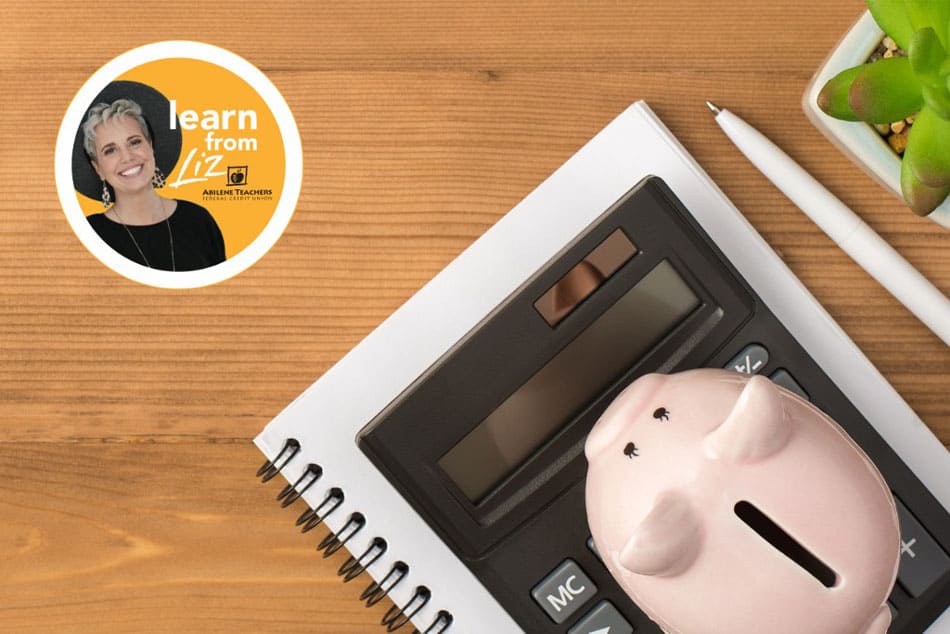What is Credit Card Interest and How Does it Effect Me?

Several times a year, I have the privilege of presenting an Economic Reality Fair to high school seniors. For those that don’t know what a Reality Fair is, it is a hands-on simulation where students experience financial challenges they will face as they begin navigating life on their own in the “real world”. The students get paired up to complete the fair as a two income household to better understand compromise while making decisions about how to spend their household’s money. Each pair has a different budget to work with, a child to take care of, and credit card debt. When the students visit our Financial Counseling station to talk about their credit card debt, it’s clear they do not understand how accrued interest makes a huge difference in the total they end up paying if they only pay the minimum monthly payment. Here’s my best effort to explain how the interest charged on a credit card really affects the bottom line.
Getting your first credit card is super-exciting.
Hello, INDEPENDENCE!
Unfortunately, though, lots of first-time credit card owners don’t know enough about credit card interest. And then it’s hello, long-term debt.
Don’t let this be you!
Here’s all you need to know about credit card interest and how it works:
What is credit card interest?
Credit card interest is the money the credit card issuer charges cardholders to borrow money when they use their cards. The interest is generally set at an annual rate known as the annual percentage rate, or the APR.
Important credit card terms to know:
- A credit card billing cycle is the period of time between credit card billings. During that time, any purchases, credits and interest charges will be added to or subtracted from your balance.
- When the billing cycle ends, you’ll receive your credit card statement, which will reflect all unpaid charges and fees for this time.
- The statement will also highlight the payment due date, which tends to be approximately 20 days after the end of the billing cycle.
- The time frame between the end of the billing cycle and the payment due date is known as the grace period.
- A credit limit is the maximum amount you can spend with a credit card. Having a high limit lets you spend more but can also make it easier to overspend and rack up a lot of debt. You may want to set your credit limit at a lower amount and request that it not automatically increase over time until you show you can handle the responsibility and not max out the card. You can always change that restriction if need be, but a lower limit allows you to learn how to use a credit card without getting into a serious financial hole.
Calculating interest
To calculate your interest charge for a billing cycle, follow this formula:
- Step 1: Divide your APR by the number of days in a year to get your daily periodic rate, or the amount of interest your credit card issuer charges during each day of the billing cycle.
- If your APR is 18.5%, you’ll divide it by 365 to get your daily periodic rate of .0005%. (0.185 / 365 = .0005)
- Step 2: Multiply the daily periodic rate by your average daily balance, or the balance you carry during each day of your credit card’s billing cycle to get your daily interest charge.
- Using the above example, if your average daily balance is $1,200, multiply this number by your daily periodic rate (.0005%) to get a daily interest charge of $0.60. (0.0005 * 1,200 = 0.60)
- Step 3: Multiply your daily interest charge by the number of days in your billing cycle.
- To follow the above example, if your billing cycle is 30 days, multiply $0.60 by 30 to get an interest charge of $18 for this billing cycle. (0.60 * 30 = 18)
Avoid paying interest
Credit card issuers will only charge interest if you carry a balance from one month to the next. If you pay your balance in full before the grace period ends, there will be no interest charged at all. Set yourself a reminder to pay your bill before it’s due and you’ll never pay credit card interest again. Sweet!
Credit cards can be a necessary part of life, but they can also be a gateway to debt. Before applying for that precious piece of plastic, brush up on your knowledge of how credit card interest works and how it affects you as a cardholder.
As of March 14, 2024, the average APR charged for credit cards is 24.37%. The highest interest rate charged is 36%! At Abilene Teachers FCU, our credit card APR ranges between 14.99% with a max of 17.99%, which is still drastically lower than the highest rate but still considerably lower than even the average. If you are thinking of getting a credit card to help build credit or for emergencies, consider getting an ATFCU credit card!
~All loans are subject to credit union approval.


